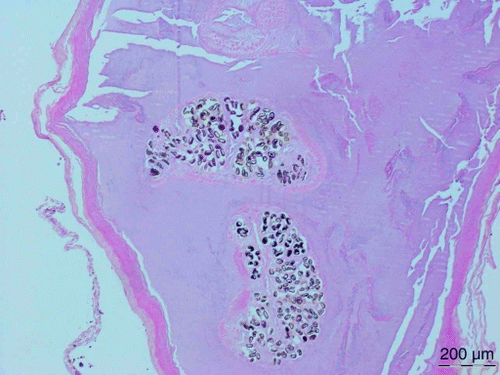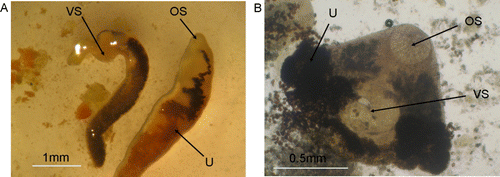Figures & data
Table 1 Results of the examination of 358 faecal samples of New Zealand passerines for helminths.
Figure 1 Capillaria spp. eggs from two different New Zealand passerines. A, Capillaria sp. egg of a tui. B, Capillaria sp. egg from a hihi from Mt. Bruce NWC.
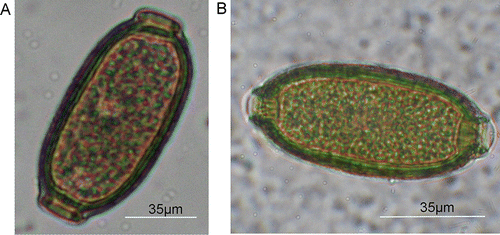
Table 2 Descriptive statistics of the Capillaria eggs recovered from hihi from Mt. Bruce NWC.
Figure 2 Cestode eggs from different passerine species. Note the hexacanth larvae inside the eggs (arrow). A, Blackbird. B, Tui. C, North Island saddleback (Mokoia). D, North Island saddleback (Orana Park).
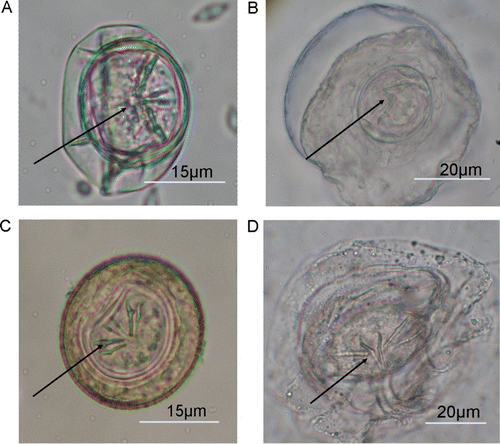
Figure 3 Comparison of the length of cestode eggs of North Island saddleback from Mokoia and Orana Park. The x-axis shows the egg size in µm, the y axis presents the frequency of the findings (number of eggs). Mokoia (white), Orana Park (black).
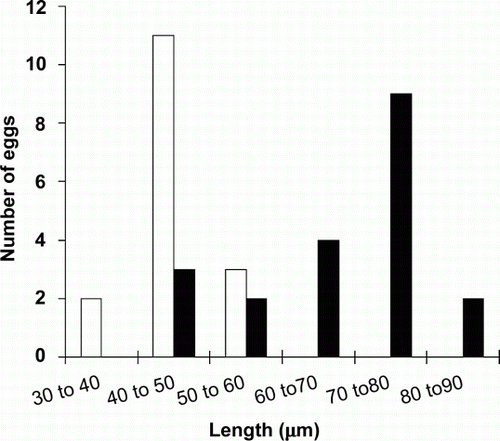
Figure 4 Comparison of the length/width ratio of cestode eggs of North Island saddleback from Mokoia and Orana Park. The x-axis shows the egg size in µm, the y axis presents the frequency of the findings (number of eggs). Mokoia (white), Orana Park (black).
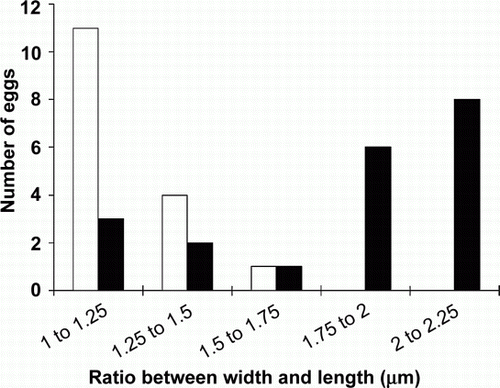
Table 3 Descriptive statistics of cestode eggs from North Island saddleback and tui.
Figure 5 Trematode eggs. A, Tui. B, North Island Saddleback/Mokoia Island. Abbreviations: M, Miracidium larvae; O, operculum.
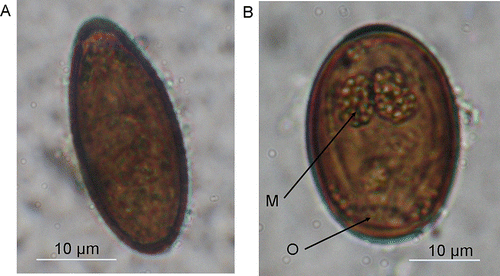
Table 4 Descriptive statistics of the trematode eggs from tui and North Island saddleback.
Figure 6 Adult trematodes containing numerous eggs in the gallbladder of a North Island saddleback from Mokoia. H&E for haematoxilin and eosin, staining method.
